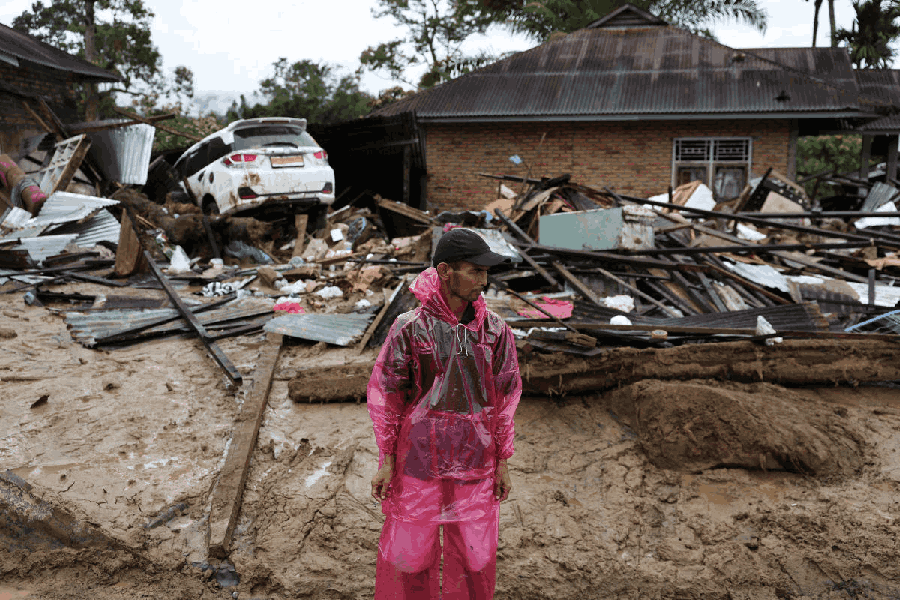New Delhi, Feb. 28: Finance minister Arun Jaitley's announcement of at least 15 new central higher education institutions has rekindled the debate whether such expansion sprees dilute the marquee brands or spread excellence.
In his budget speech, Jaitley said the government planned to establish six new All India Institutes of Medical Sciences in different states, an Indian Institute of Technology in Karnataka, and two Indian Institutes of Management in Jammu and Kashmir and Andhra Pradesh.
He also announced two new Indian Institutes of Science Education and Research in Nagaland and Odisha, three pharmaceutical education institutions in Chhattisgarh, Maharashtra and Rajasthan, and a Centre for Film Production, Animation and Gaming in Arunachal Pradesh.
Senior academics say a nation the size of India needs more such institutions of excellence, but many confess themselves uncomfortable with the rate at which they are being created without appropriate resources to support their growth.
"We certainly could do with more IITs," said Dheeraj Sanghi, professor of computer science at IIT Kanpur.
"But it may have been better to set them up at a slower pace, perhaps one new IIT every year. That way, resources could be concentrated to help build the required infrastructure."
Over the past decade, the government has set up eight new Indian Institutes of Technology and proposed five more excluding today's announcement.
It has created five Indian Institutes of Science Education and Research and 13 Indian Institutes of Management, as well as AIIMS-like institutions in Chhattisgarh, Bihar, Madhya Pradesh, Odisha, Rajasthan and Uttarakhand. It has pledged funds for an AIIMS in Bengal.
Jaitley has now proposed new AIIMS in Assam, Himachal Pradesh, Jammu and Kashmir, Punjab and Tamil Nadu, and a second AIIMS in Bihar.
"When the government makes such plans, it also has to provide budgetary resources to help such institutions take off," said Chintamani Nagesa Ramachandra Rao, national research professor at the Jawaharlal Nehru Centre for Advanced Scientific Research, Bangalore.
"Our experience with establishing new institutions has not been very good. Many of the new IITs are just limping without adequate campus infrastructure," said Rao, who had played a key role in establishing the IISERs between 2005 and 2009.
Many teachers and current and former students are worried that such rapid expansion of institutions named after India's globally acclaimed brands may hurt the institutions' overall image. Others say that this need not happen.
"The brand value will take a hit - it may seem to go down, but this should not really affect the original institutions," Sanghi said.
"Just because there are more than a dozen IITs today, the best students won't stop opting for the original IITs."
Senior researchers and policy makers across the fields of science and health believe that the new institutions could be far better supported if the government simultaneously increased its budgets for science and technology and health research.
"But we don't see the budget increases," a senior scientist said.
The outlay for the department of science and technology for 2015-16 is Rs 3,835 crore, just about an 8 per cent increase over last year's pledged funding of Rs 3,544 crore. The health research outlay for 2015-16 is only 0.098 per cent higher than last year's.
But many have hailed the expansion drive.
"While the original institutions do attract the top students, many students of equal calibre are left out because of the way they're all screened through entrance examinations," said Gobardhan Das, professor of biology at Jawaharlal Nehru University, New Delhi.
"Cracking the examinations often depends on the resources the students have; coaching and guidance cost money," Das added.
"Students with similar capabilities from underprivileged backgrounds find it hard to cross the bar. The brands, for a long time, primarily accepted students from privileged backgrounds. Adding more such institutions will enhance both capability-building and inclusiveness."
But the expansion should be accompanied with innovative mechanisms to find appropriate faculty for the new institutions, academics said.
The government could consider raising the teacher retirement age or re-hiring former teachers who still have the expertise, they added.
"The new institutions should be given time to establish their own brand," said Sanghi. "It takes about five years to fully establish an institution, and brand-building could take about 10 years."











